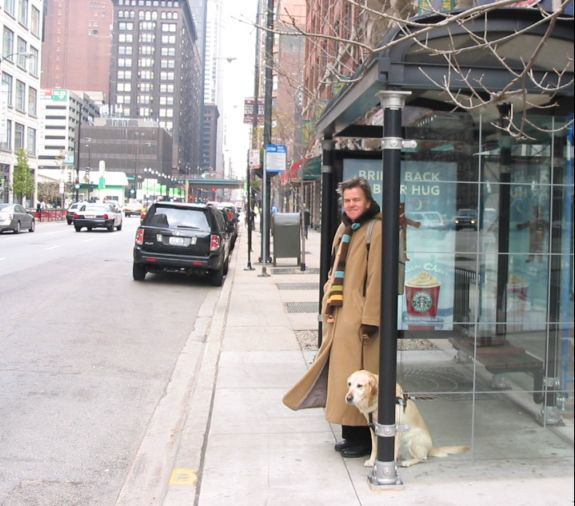Technology Does What Guide Dogs Can't
January 7, 2009 • 8 Comments • Posted in Beth Finke, blindness, Uncategorized Ever since I heard last Sunday’s New York Times article, For the Blind, Technology Does What a Guide Dog Can’t (I listened to it online via my supercool talking computer, of course) I’ve been telling friends it’s one of the best articles I’ve ever read about technology for the blind.
Ever since I heard last Sunday’s New York Times article, For the Blind, Technology Does What a Guide Dog Can’t (I listened to it online via my supercool talking computer, of course) I’ve been telling friends it’s one of the best articles I’ve ever read about technology for the blind.
Only now do I realize how self-centerred I’m being when I gush over this NY Times article – the reason I like it so much is that it covers some of the same topics I talk about in this blog!
Example: in a post last July called Enter the Letters You See in this Box — If You Can See Them, I wrote about how frustrating it is when you can’t see to read that box of distorted letters that shows up when you’re trying to complete a task on a computer. The New York Times article mentions this, too:
Obstacles on the Web take many forms. A common one is the Captcha, a security feature consisting of a string of distorted letters and numbers that users are supposed to read and retype before they register for a new service or send e-mail. Few Web sites offer audio Captchas.
And just last month I blogged about Texting by Ear. The NY Times story covers this issue and more – the article focuses on T. V. Raman, a computer scientist and engineer at Google who happens to be blind. Raman is working to develop a touch screen phone for people who can’t see.
Instead of asking how something should work if a person cannot see, he says he prefers to ask, “How should something work when the user is not looking at the screen?”
Such systems could prove useful for drivers or anyone else who could benefit from eyes-free access to a phone.
When Mike was looking for Christmas and birthday gifts for me last month, he considered buying me a new-fangled gadget to replace the tape player I use to read books aloud. One of the reviews he found of this particular gadget came from someone who could see. “The guy liked to listen to books while he drove,” Mike told me later. “He didn’t want to take his eyes off the road while fiddling with the audio player.” Dang. If only I’d published a post about that, I could claim I scooped the New York Times on that technology issue, too!
One of my favorite quotes in the NY Times article came from Larry Goldberg, who oversees the National Center for Accessible Media at WGBH in Boston. Goldberg points out that a lot of the innovations designed primarily for people with disabilities end up benefitting the general population. I have never blogged about “universal design,” but I try my best to weave the idea into the speeches and presentations I give.
They include curb cuts for wheelchairs, captions for television broadcasts and optical character-recognition technology, which was fine-tuned to create software that could read printed books aloud and is now used in many computer applications, he said.
Touch-screen cell phones don’t have buttons. That’s kind of the point. You know — touch screen. But without buttons to guide our fingers over a glassy surface, developing a touch-screen cellphone that blind people can use may be too much of a challenge.
But Mr. Raman said that with the right tweaks, touch-screen phones — many of which already come equipped with GPS technology and a compass — could help blind people navigate the world.
“How much of a leap of faith does it take for you to realize that your phone could say, Walk straight and within 200 feet you’ll get to the intersection of X and Y,’ “Mr. Raman said. ”This is entirely doable.”
I guess we’ll just have to wait and see. Or, sorry. Wait and hear.